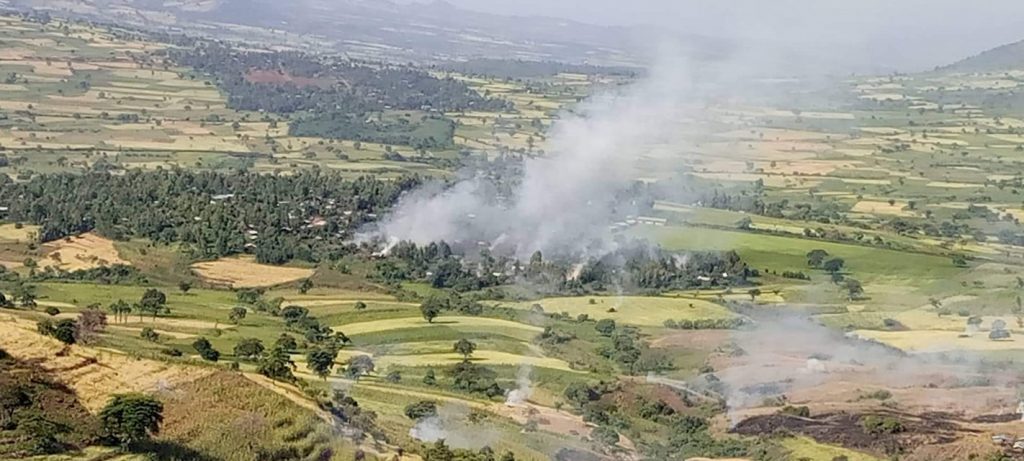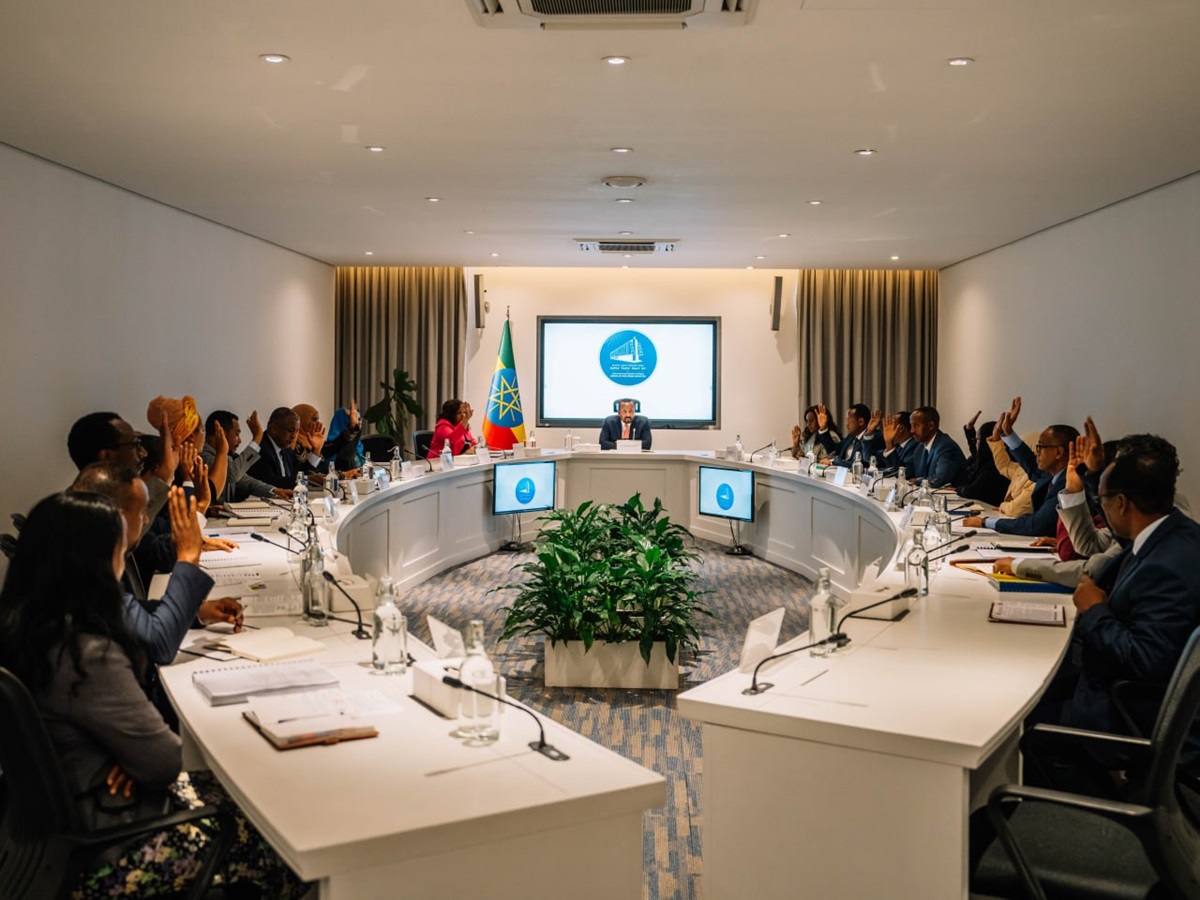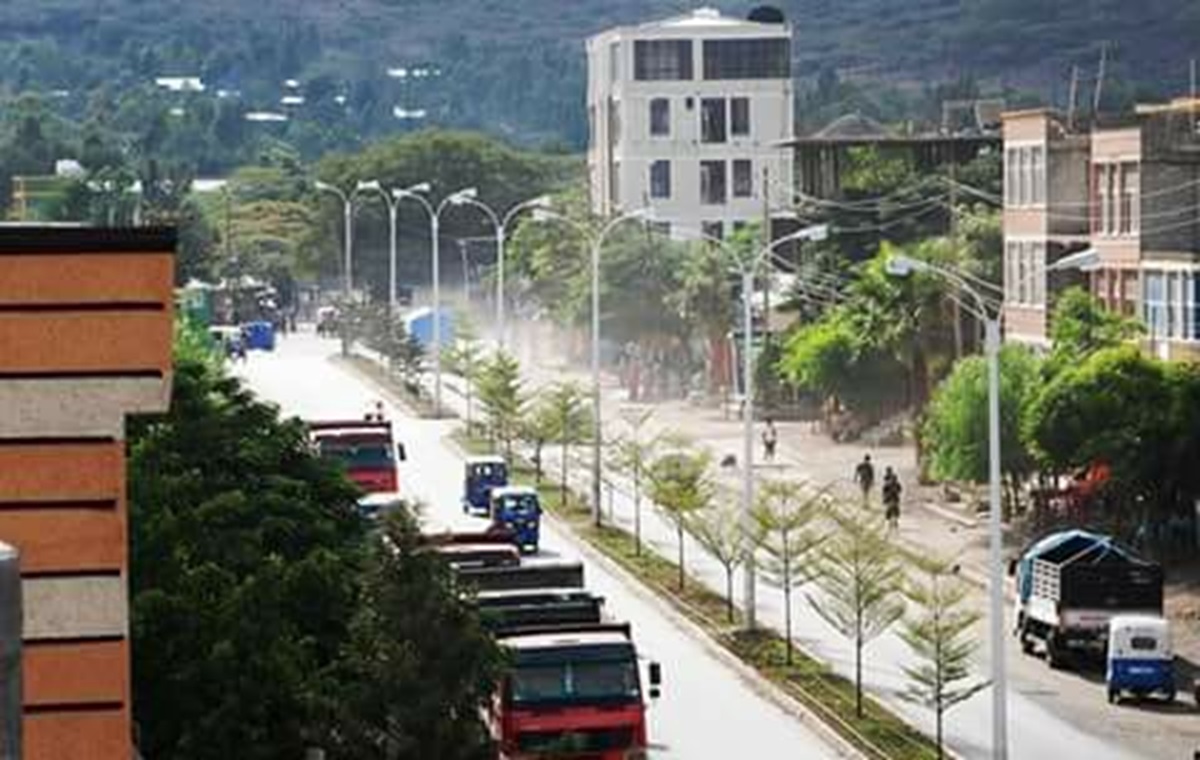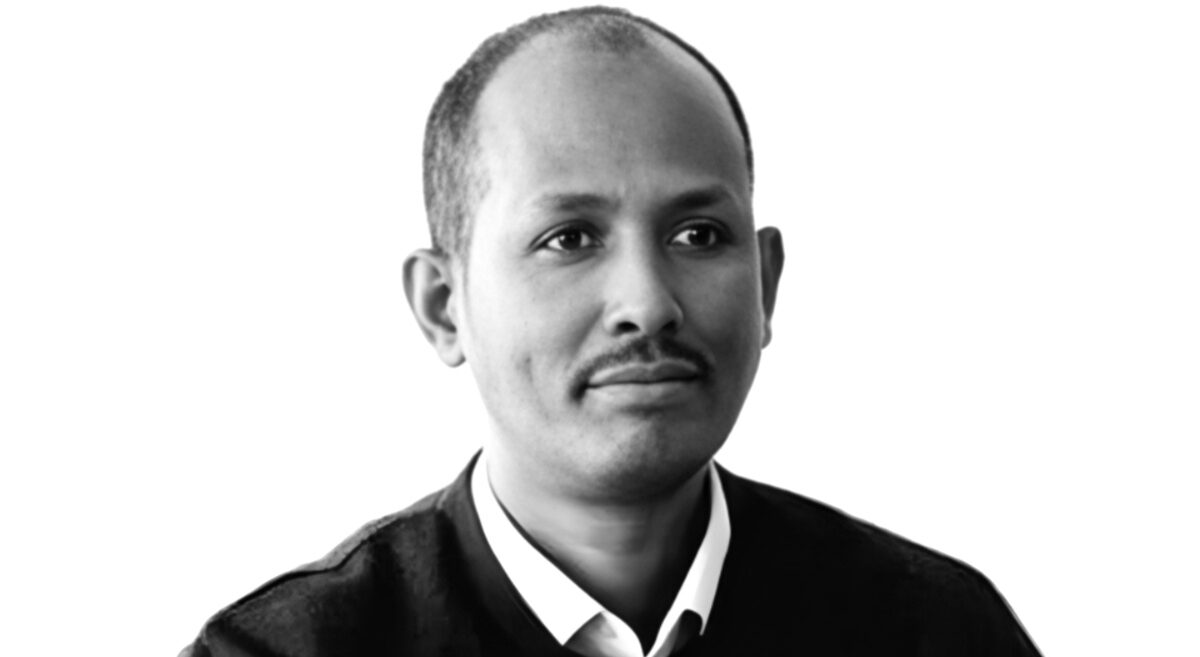News: 66 killed in recurring conflict in Konso; IDPs, victims require urgent attention: Rights Comission

Addis Abeba, December 25/2020- The series of conflicts that recurred in Konso Zone (Southern Nations, Nationalities and Peoples Region – SNNPR) from November 10th to November 21st, 2020, and resulted in gruesome killings, injuries, displacement and property destruction, show that the human rights crisis in the area still awaits sustainable resolution, the Ethiopian Human Rights Commission (EHRC) said.
In its Rapid Monitoring Report on the Ongoing Human Rights Situation in Konso Zone & Surrounding Areas Following a Conflict that Recurred on November 10, 2020 (Executive Summary in English below) released on December 24th, 2020 the Commission presented findings of an investigation carried out from November 22nd to November 25th , 2020 in Haybena and Ayde Kebeles, as well as the cities of Arba Minch, Gidole and Karat.
The Report indicates that at least 66 people have died, 39 have been injured, several houses and other property have been burned and more than one hundred thousand people have been displaced.
EHRC Chief Commissioner Daniel Bekele said “The underlying problems behind the longstanding insecurity in Konso Zone and its surroundings has not been given appropriate attention. The sheer number of people displaced, and that some of them are being displaced for the fifth time, is a tragic humanitarian crisis. While the provision of humanitarian assistance to the displaced is an urgent priority, the federal and regional governments need to work together with the local population to find a solution that will restore lasting peace to the area.”
“Kebeles/Villages that took years to build have been turned to ashes in just six days”
Brief Monitoring Report on the Ongoing Human Rights Situation in Konso Zone & Surrounding Areas Following a Conflict that Recurred on November 10, 2020.
Executive Summary and Recommendations
The Ethiopian Human Right Commision dispatched a monitoring team to the area in and around Konso Zone in SNNPR and from November 21st to 25th, 2020 travelled between Haybena and Ayde Kebeles and Arba Minch, Gidole and Karat Cities. The following is the report EHRC team delivered:
Following the redeployment of the Ethiopian National Defence Forces from the area on October 31st, 2020, a series of conflicts recurred in Southern Nations, Nationalities and Peoples Region’s (SNNPR) Konso Zone and surrounding areas of Ale Woreda, Segen Area Kebeles, Buniti Kebele of Amaro Woreda from November 10th to November 20th, 2020 and from November 13th to November 15th, 2020 in Gato Kebele of Derashe Woreda. The SNNPR Peace and Security Bureau statement estimates that the conflicts have displaced 132, 142 people and 66 people to have died and 39 to have been injured.
An Ethiopian Human Rights Commission (EHRC/Commission) monitoring team was sent to the area and from November 21st to 25th, 2020 travelled between Haybena and Ayde Kebeles and Arba Minch, Gidole and Karat Cities gathering testimonies from victims, families of victims and witnesses including responses from relevant local authorities and other evidence. However, the unstable security situation in the area at the time did not permit an extensive and more in-depth investigation.
As indicated in the report, perpetrators of the attacks have killed several people in a gruesome and cruel manner and injured many others; houses, farms, harvests and other property in many kebeles have been partially burned or completely razed to the ground. There are many accounts of people who have died inside burning houses and of the continued difficulty of returning to the kebeles to check on the ones left behind. Eyewitnesses describe how, in Melega & Dugaya Kebeles for instance, “attackers killed an elderly man by setting fire to a pile of hay he was hiding in because he could not escape. Another man, unable to flee because of a broken leg, was hacked to death by the attackers who then torched the man’s house with his body inside.”
The conflicts have caused a large-scale humanitarian crisis. Families have been separated and reconnection with members of family has not yet been made possible. One of the victims the Commission’s team spoke to in Karat City, reports that he has been separated from his children. Another man, displaced to Arba Minch City, says that he was unable to get in touch with his family who he heard had fled to either Benaya or Gobeze Kebele in Burji Woreda. “I followed the rest of the fleeing population carrying my – newborn baby, but I still do not know where and what happened to my husband. He was not home when the conflict began” recounts another young woman.
Victims and representatives of local administrations EHRC spoke to both give varying and contradicting accounts on the identity of the attackers. On the one hand, some victims and local officials claim that the perpetrators are “an armed wing of groups demanding a Special Woreda administrative status for Gumayde People”; other victims, on the other hand, claim they were attacked by an armed Konso group which calls itself “Konsita” and is backed by the Regional Liyu Force (Special Force). The Regional Liyu Force and the Konso Zone administration blame the said “Gumayde Special Woreda demanding armed group” for the attacks. Konso Zone administration also points to “provocative aggressions” taken by this group on the Regional Liyu Force members based in the area as the triggering factor for the series of conflicts that ensued, but the latter maintains that it suffered no such aggressions. In addition, the Konso Zone administrations holds that Derashe Woreda administration, OLF Shene and TPLF all have a hand in the conflicts, while Derashe Woreda administration officials lay the blame on the Konso Zone administration itself.
While it is difficult to conclude these attacks were wholly ethnic based, a number of victims displaced from Buniti Kebele Amaro Woreda say there are groups who target them as “Amharas who live in Amaro land but favor a new Gumayde structure”.
People who support the Konso Zone structure, those who support the demand for a Gumayde Special Woreda and those without any involvement either way, all have equally been victims of the recent wave of conflicts. Since the local population is multi-ethnic, victims who have been attacked for supporting the demand for a “Gumayde Special Woreda” are as ethnically diverse as those who have been targeted for supporting the “Konso administration and structure”.
While it is crucial to find a lasting solution given the high likelihood of conflicts continuing to flare up so long as the root causes are left unresolved, providing humanitarian assistance to those currently displaced by the attacks is of pressing priority. Identification of and transparency on the exact number of victims and displaced persons and the reason for their displacement plays as significant a role in the justice process as it does in determining humanitarian assistance needs. The humanitarian assistance should also factor in the fact that the conflicts took place during harvest season and that farms and harvests have been burned during the attacks.
That popular demands, many related to administrative structures and arrangements, have been left to fester over several years is undeniable. This makes it indispensable to differentiate these demands from border conflicts or those related to use of natural resources. Although it is vital to pace up the ongoing process to hold accountable those who exploit these administrative demands to aggravate the conflicts and those who back them, sustainable peace in the area can only be achieved if these administrative demands find a comprehensively participatory solution.
Corrective measures also need to be taken after the appropriate investigation into officials within government structures, who, directly or indirectly, inflame, aid or aggravate the
conflicts or fail in their duties to protect civilians. Improving the measures to control the reportedly increasing transfers of illegal firearms in the Konso Zone area is also critical part of the ongoing efforts to prevent further conflicts.
Background on Konso (Structure and Context of Conflicts)
Konso is an area in the South Western of the Southern Nations, Nationalities and Peoples Region (SNNPR) of Ethiopia, along the Segen River with a population estimated at 300,000. Located at around 90 kilometres south of Arba Minch city, it is bordered by Borena (Oromia Region) in the south, Ale Woreda (SNNPR) in the west and by Derashe and Amaro Woredas in the north. The Konso Cultural Landscape, recognized in 2011 by UNESCO as a world cultural heritage, is one of the main tourist destinations of the country.
Between 2010 and 2018, Konso was an administrative structure within a Zone consisting of five Woredas (Konso, Derashe, Amaro, Burji and Ale) and named “Segen Area Peoples”. The Segen Area Peoples Zone was given a new capital, called “Segen City Administration”, itself comprising of 17 kebeles which were formerly kebeles under the five woredas listed above. The Segen City Administration in effect merged 9 Kebeles from Konso Woreda, 4 Kebeles from Burji Woreda, 3 from Amaro Woreda and 1 Kebele from Derashe Woreda. Before 1994, these 17 kebeles were a single Woreda called “Gumayde Woreda” which in 1994 were split/reorganised along ethnic based boundaries.
The demand by Konso to secede from Segen Area Peoples Zone and become a Zone, which began in 2014, was approved four years later and in [2018] the new Konso Zone was set up. It was also decided that the remaining four Woredas under the former Segen Area Peoples Zone, (Derashe, Amaro, Burji and Ale), become separate woredas on their own. This, in turn, resulted in the split of the “Segen City Administration” and the 17 Kebeles it combined returned to their former (1994) ethnic based organisation.
The restructuring caused disappointments in those who opposed the “dismantling of the Gumayde Woreda” and a “Gumayde Peoples Special Woreda Return Committee” emerged shortly after. The people who consider themselves “Gumayde Peoples” and who live dispersed across the former 17 Kebeles, oppose the separation or organisation along ethnic based boundaries and argue that the “Gumayde Peoples Special Woreda Structure” allowed easy access to social and public services, that the people share a common psycho-social makeup and that they would have been capable of choosing one official/administrative language. They feel that rather than dismantling the Segen City Administration it should be given a Special Woreda status.
Konso Zone, Amaro and Burji Woredas administrations on their part, contest the demand for the following reasons: “The people who demand a Gumayde Special Woreda status have no land, no people and no structure of their own. They are instead people from multiple ethnic groups living in various existing structures so it will be difficult for them to choose a single administrative/official language.”
Regardless, in June 2018, the SNNPR administration decided to dismantle the Segen City Administration and the 17 kebeles that formed returned to their 1994 ethnically organised woreda structures. Although, for many years, the area has been prone to border squirmishes, the decision to disassemble the Segen City Administration has made the conflicts more
complex and drawn out by creating a divide between those who support and those who oppose the move.
Since the former Segen City Administration is an area that borders the Woredas of Konso, Derashe, Burji and Amaro, any conflict that begins in the area spreads to all other ones and disturbs the peace and security of all the people in the surroundings. For example, in a report from 2019, the EHRC reported that in a similar wave of conflicts, 53 people had died and an estimated 40 million birr worth of property was destroyed.
Links for the full report in English and Amharic.







